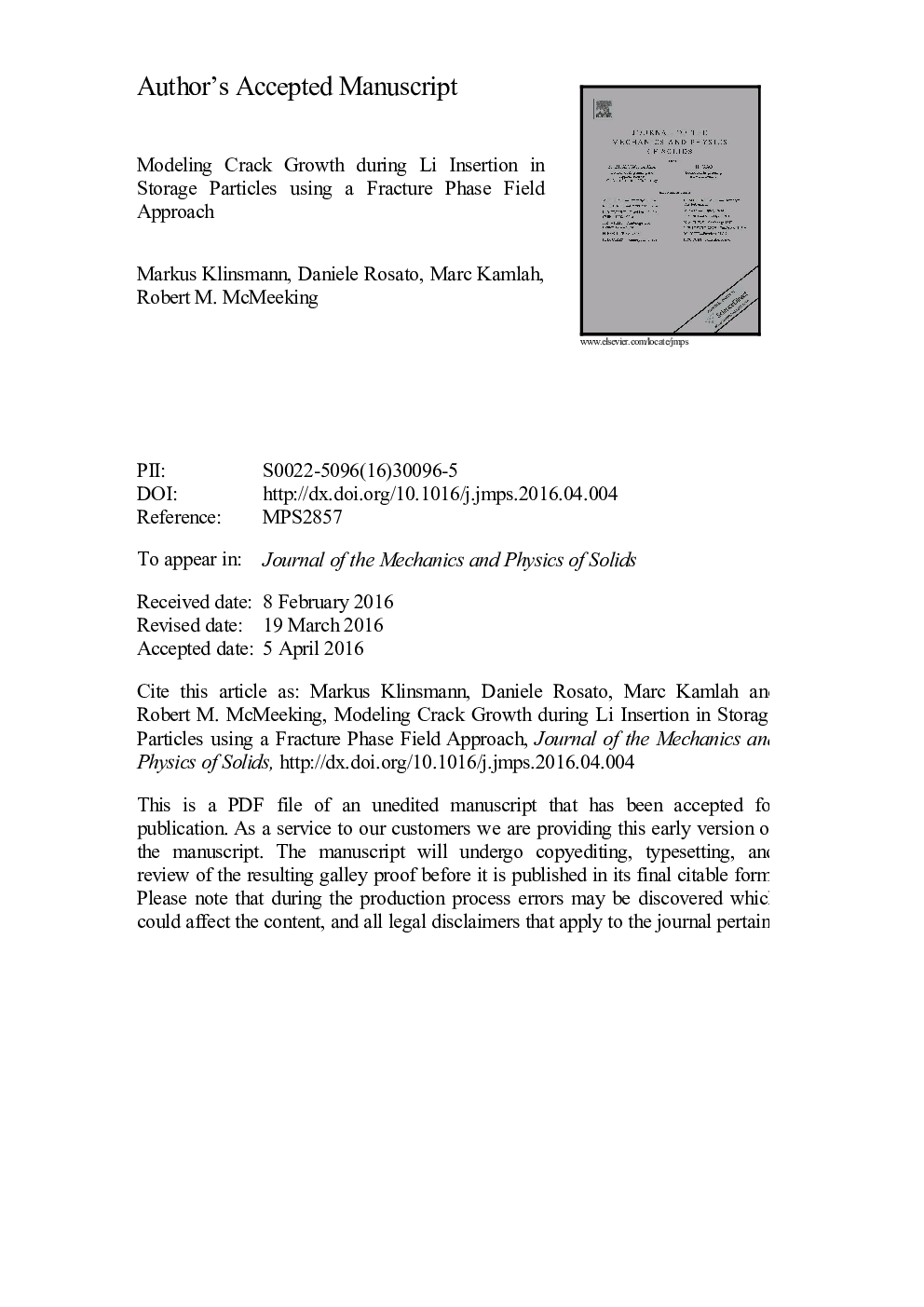| Article ID | Journal | Published Year | Pages | File Type |
|---|---|---|---|---|
| 7177772 | Journal of the Mechanics and Physics of Solids | 2016 | 65 Pages |
Abstract
Fracture of storage particles is considered to be one of the major reasons for capacity fade and increasing power loss in many commercial lithium ion batteries. The appearance of fracture and cracks in the particles is commonly ascribed to mechanical stress, which evolves from inhomogeneous swelling and shrinkage of the material when lithium is inserted or extracted. Here, a coupled model of lithium diffusion, mechanical stress and crack growth using a phase field method is applied to investigate how the formation of cracks depends on the size of the particle and the presence or absence of an initial crack, as well as the applied flux at the boundary. The model shows great versatility in that it is free of constraints with respect to particle geometry, dimension or crack path and allows simultaneous observation of the evolution of lithium diffusion and crack growth. In this work, we focus on the insertion process. In particular, we demonstrate the presence of intricate fracture phenomena, such as, crack branching or complete breakage of storage particles within just a single half cycle of lithium insertion, a phenomenon that was only speculated about before.
Related Topics
Physical Sciences and Engineering
Engineering
Mechanical Engineering
Authors
Markus Klinsmann, Daniele Rosato, Marc Kamlah, Robert M. McMeeking,
